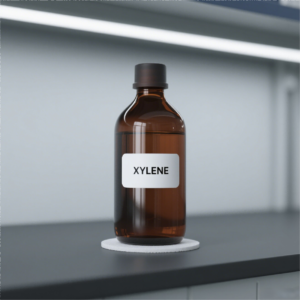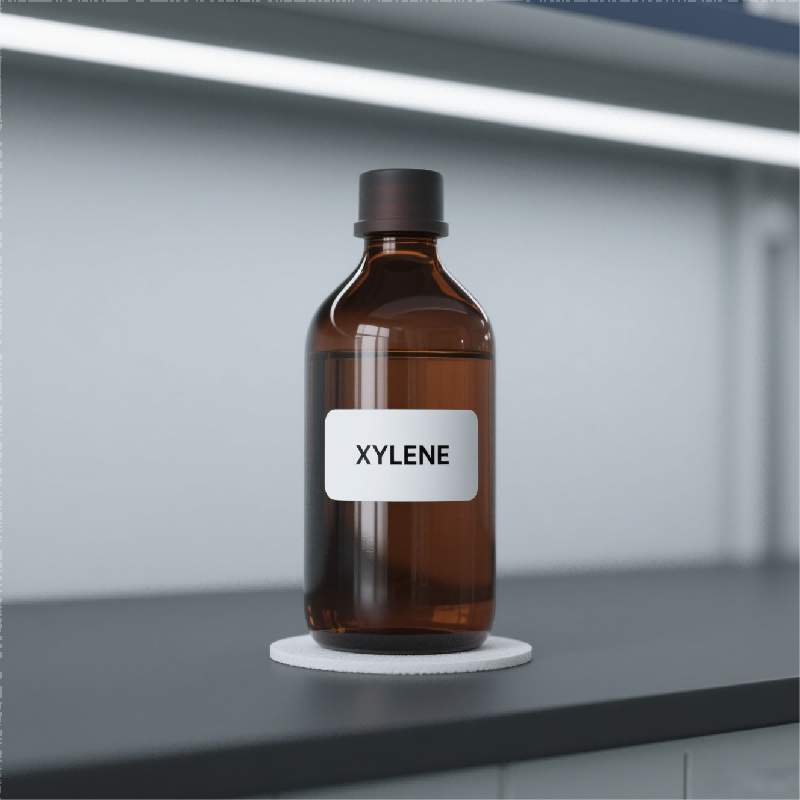Is Xylene Toxic?
It’s one of the chemicals most people have likely heard of but very few truly understand. Xylene – a common solvent found in numerous industries and even some household products – is generally perceived as being toxic, but what does that really mean? Is xylene toxic in small amounts or only when exposure is prolonged and heavy? How does it affect our bodies and what precautions should be taken while handling it?
Here’s what we’re going to get into in this lesson with xylene; its chemical structure; what areas of a person’s health can be affected once they are exposed to it and how sophisticated practices can prevent these effects; and whether or not, it’s safe to use xylene and the safety basis for the conclusion: lastly, we’re going to talk about how you can handle any waste byproducts responsibly.
What Is Xylene?
Xylene is an aromatic hydrocarbon; that category of organic compound contains a benzene ring with two methyl groups attached. Three isomers exist: ortho-xylene, meta-xylene, and para-xylene. Their chemical structures are slightly different, though their properties are very much the same. They are typically presented as colorless liquid material having a sweet odor, being highly flammable, and serving as the major solvent components in paints, coatings, adhesives, and cleaning agents.
Besides industrial uses, xylene is seen in printing, and rubber and leather processing. Laboratories use it as a reagent. It will dissolve very many materials, hence its use but at the same time those properties that make it potent also lead to its toxicity.
Xylene is naturally found in crude oil in small quantities and is an ingredient of gasoline; however, human exposure takes place mostly from manufactured products. This can be at workplaces, or sometimes at home if the place is not adequately ventilated while painting or cleaning.
How People Are Exposed to Xylene
Understanding how xylene enters the body is key to assessing its toxicity. Exposure can occur in several ways:
Inhalation: The most common route, particularly in industrial or laboratory settings. Vapours from paints, thinners, or cleaning agents can be inhaled directly.
Skin Contact: Xylene can be absorbed through the skin, especially if contact is frequent or prolonged.
Ingestion: Rare, but possible if contaminated water or food is consumed.
Accidental Exposure: Spills or improper handling may result in localized exposure or environmental contamination.
It is in the paint shops, printing facilities, or chemical laboratories that industrial workers are most at risk. The general public typically experiences xylene at low concentrations during periodic home renovations or due to environmental pollution. Short exposure can also manifest effects if it is of high concentration, thus making knowledge on safety measures very important.

Short-Term Health Effects
Even brief exposure to xylene can have immediate effects. Many of these are sensory in nature, and while not life-threatening in most cases, they can be uncomfortable:
Eye, Nose, and Throat Irritation: The vapour can irritate mucous membranes, causing redness, burning, or a scratchy throat.
Headache and Dizziness: Common symptoms when inhaling xylene in poorly ventilated areas.
Nausea and Vomiting: Strong or prolonged exposure may upset the stomach.
Skin Irritation: Direct contact can lead to redness, dryness, or mild dermatitis.
In small amounts, such effects are usually reversible once exposure ends and the area is ventilated. However, repeated short-term exposures without adequate protection can gradually accumulate, leading to more serious health concerns.
Long-Term Health Effects
Repeated or prolonged exposure to xylene is more concerning. Studies indicate that chronic exposure primarily affects the nervous system, liver, and kidneys. Key long-term effects include:
Neurological Issues: Tremors, memory impairment, difficulty concentrating, and in severe cases, peripheral neuropathy.
Liver and Kidney Damage: Metabolism of xylene produces metabolites that can stress these organs, potentially leading to functional impairment over time.
Respiratory Problems: Continuous inhalation can irritate the lungs and contribute to long-term respiratory discomfort.
Pregnant women should be particularly cautious, as exposure to high levels of xylene has been linked to developmental effects in animal studies, although human data is more limited. Children, too, are more vulnerable due to their developing systems and higher respiratory rates.
How Xylene Works in the Body
The toxicity of xylene is basically due to its lipophilic or fat-loving nature. When inhaled, or absorbed through the skin, it readily distributes to all body fat tissues including the brain and nervous tissue. This explains why symptoms like dizziness and headaches are among the first signs noticed with exposure.
Xylene is primarily metabolised in the liver to methylhippuric acid and then excreted in the urine. Even though this can easily cleanse xylene from the system, high exposure levels will overwhelm the metabolic pathways, causing accumulation and eventual toxicity. Because these are just the two major organs involved in any detoxification and excretion process, others may be at risk under conditions of prolonged exposure.
Environmental Impact of Xylene
Xylene doesn’t just affect humans. Its use and release can have significant environmental consequences:
Air Pollution: Xylene is a volatile organic compound (VOC), contributing to smog formation and poor air quality.
Water Contamination: Spills or improper disposal can lead to water pollution, affecting aquatic life.
Soil Contamination: It can persist in soil, altering microbial communities and potentially entering the food chain.
While it degrades relatively quickly under certain conditions, large-scale industrial releases can have lasting local environmental impacts. This is why proper storage, handling, and disposal are critical.
Safety Measures and Protective Practices
Given xylene’s toxicity, safety measures are essential. Here are the most effective practices for both workplaces and home settings:
Ventilation: Always use xylene in well-ventilated areas. Local exhaust systems in labs and workshops help minimise inhalation risks.
Personal Protective Equipment (PPE): Gloves, safety goggles, and respirators protect skin, eyes, and lungs.
Storage: Keep xylene in tightly sealed containers, away from heat sources, sparks, and incompatible chemicals.
Spill Management: Promptly contain and clean spills using absorbent materials and ensure proper disposal.
Even occasional users, like hobbyists or painters, benefit from following these precautions. Simple actions like opening windows, wearing gloves, and using a mask significantly reduce health risks.
Regulations and Exposure Limits
Governments and agencies recognise xylene as a hazardous substance, and several exposure guidelines exist:
OSHA (Occupational Safety and Health Administration): Sets permissible exposure limits (PEL) for workplace air.
NIOSH (National Institute for Occupational Safety and Health): Recommends exposure limits and guidelines for industrial safety.
EPA (Environmental Protection Agency): Regulates environmental releases and sets drinking water safety standards where relevant.
Typical limits suggest that airborne concentrations should not exceed 100 ppm over an eight-hour workday. Employers are required to provide safety training and ensure monitoring for industrial workers.
Xylene Alternatives
Given its toxicity and environmental impact, safer alternatives are increasingly used in many industries:
Water-based solvents for paints and coatings.
Less volatile organic solvents for cleaning and printing.
Bio-based solvents derived from citrus or plant oils.
While these alternatives may be slightly less effective in some scenarios, the reduced health and environmental risks make them attractive for long-term use.
Preventing Accidental Exposure at Home
Even if you’re not an industrial worker, accidental exposure at home is possible, especially during DIY projects:
Never leave xylene-containing products open or in reach of children.
Use appropriate protective gloves and goggles when handling paints or solvents.
Avoid inhaling fumes directly; open windows and use fans to ensure airflow.
Do not pour xylene down drains or into soil — use hazardous waste disposal points.
Simple mindfulness about these chemicals can drastically reduce their risk factors toward health.
So, is xylene toxic? The answer would be yes. It can be depending on the level, duration, and route of exposure. Normally, short-term low-level exposure presents minor reversible effects but it has potential effects when exposure is prolonged or to high levels. It has a neurotoxic effect as well as effects on the liver, kidney, and respiratory system. Damaging the environment puts a stake in the concern also thus emphasizing stakes in responsible usage, handling, and disposal.
Know xylene. Respect its dangers. Practice safety. Then, we can allow its industrial and laboratory benefits to flow without letting it harm the environment or our health. The best way to manage the risk of this powerful, though ordinary, chemical is to be aware and cautious.



